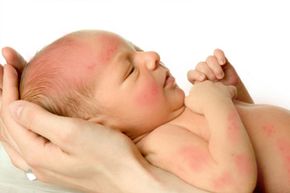There are probably plenty of diseases you associate with childhood. And whether it's chickenpox, mumps or rubella, you usually know what to expect from them -- some sort of itchy rash and maybe a mild fever. Typically, these illnesses run their course without serious lasting effects.
Similar in many ways to these other rash-causing conditions, parvovirus infection -- sometimes referred to as "fifth disease" or "slapped cheek disease" -- often gets overlooked or misdiagnosed. In fact, people call parvovirus fifth disease because it shares so many traits with four different childhood rashes: measles, scarlet fever, rubella and Dukes' disease. Like the others, most people get it as children -- as many as 40 to 60 percent of people have had parvovirus infection.
Advertisement
Most people don't spend too much time worrying about the long-term effects of fifth disease. Sometimes, symptoms of the disease are so mild that they never even realize they had it [source: Kid's Health]. However, like other infections, it has its own set of dangers: For example, fifth disease can cause more serious symptoms for adults who catch it, and pregnant women who have it can potentially pass on fatal health problems to an unborn child [source: Mayo Clinic: Parvovirus].
With that in mind, it's important to know the basics about fifth disease: its symptoms, its treatments, how it spreads and what you can do to keep from catching it in the first place. You should also know how to avoid the medical complications associated with parvovirus and pregnancy.
First, read on to find out why parvovirus got stuck with the moniker "slapped cheek disease."
Advertisement
